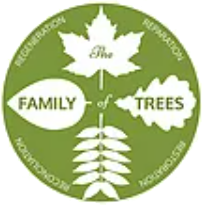Most of us value our lawns for their various environmental, recreational and aesthetic benefits. However, when we mismanage or neglect our lawns we diminish or destroy these benefits. As it happens, with a few maintenance and schedule adjustments, most every homeowner ought to be able to reduce their lawn care labor without compromising the health of their lawn. Read ahead for some tips to help you achieve a “sustainable” lawn without the need for large, additional inputs of time and resources.
Healthy Soil Builds Healthy Lawns
- Maintaining a healthy soil will improve both short and long-term lawn health. Where soils are hard and compacted, use a mechanical core aerifier to help relieve that compaction. Core aerification increases rooting depth, which in turn allows greater access to soil water and nutrient reserves. This will also contribute to greater plant stress tolerance.
Right Plant/Right Place
- The fine-leaved fescues (grass blades) as well as the “common” types of Kentucky bluegrasses, such as Park and Kenblue, require less water, fertilizer, and cutting than turf-type perennial ryegrass or many of the newer “improved” types of Kentucky bluegrass.
Mow Properly
- Maintain home lawns at 2.5 to 3 inches. Mowing higher encourages greater depth of rooting and actually requires less frequent mowing.
- Removing no more than about 1/3 of grass blade growth at any one mowing helps maintain a more even, less demanding growth rate throughout the growing season. Mowing infrequently and/or removing large amounts of grass tissue at one time can seriously weaken or destroy the grass plant.
- Compost your clippings right into your lawn! With regular mowing, grass clippings can be left on the lawn. As they decompose and “release” their nutrients, they will provide the equivalent of 1 to 1.5 applications of fertilizer per season.
Provide Nutrients Only as Needed
- Depending on the types of lawn grasses present and the intended use of your lawn, most lawns will benefit from the addition of 1 to 3 pounds of nitrogen per 1000 square feet per year, with two-thirds of the requirement applied in the fall and one-third applied in the spring. Generally apply no more than 1 pound of actual nitrogen per 1000 square feet per application.
- Excessive amounts of “quick-release” nitrogen, especially when applied in the spring, will increase your lawn’s demand for moisture, increase its frequency for needed mowing, and generally decrease stress tolerance into the warmer, dryer period of summer.
- In most instances, select fertilizer products containing at least 35% to 50% of their nitrogen supply in the “slow-release” form, such as sulfur-coated urea, methylene urea or various natural organic products. This will provide a more even supply of nitrogen to the plant during the growing season, and will help avoid some problems associated with “quick-release” nitrogen forms.
- Applying phosphorus to an existing lawn is usually not necessary, unless otherwise determined by a soil test, or at the time of installing a new lawn. Therefore, it is appropriate to select fertilizers that do not contain phosphorus, which will in turn help reduce the amount of phosphorus entering our watersheds.
Watering Tips
- To maintain a lawn in a green and growing condition during summer months, most lawns will require 3/4 to 1 inch of water every week to 10 days from about June through August or early September. From about mid-April through May, and mid-September into early November, lawns may only require half (or less) of that amount due to cooler temperatures and usually more frequent rainfall.
- During seasonal dry periods in which your lawn is allowed to go into a dormant (or resting) state, intervals and amounts of lawn watering can be adjusted to help conserve water while still keeping the plants alive. For example, under warm (75 to 80 degrees Fahrenheit) but dry conditions, 1/4 to 1/2 inch of water can be applied every 14 to 21 days. During hot conditions, especially when it is also windy, apply the same amount of water every 7 to 10 days. Sandy, lighter soils will require more frequent watering than heavy clay soils, regardless of weather conditions. While this strategy will help keep the plants alive, there will likely be a temporary decline in lawn quality during these stress periods.
Managing Weeds
- The presence of a few weeds in an otherwise healthy, vigorous home lawn is not a serious threat to the lawn’s health. Always try to determine why weedy plants seem to do better in certain locations than grass (e.g., shady, dry, too moist, etc.). Rather than reaching for an herbicide, consider altering the growing environment to better suit grass growth over weeds. For example, in shady areas, try pruning some lower tree branches to allow more light to reach the ground and give grass a more competitive edge against weed invasion. Also, consider other ground covers or mulches when site conditions are unfavorable to successful grass growth.
- Where only a few scattered broadleaf weeds such as dandelions or plantain are present, consider spot-treating individual weeds rather than applying a broadcast treatment of an herbicide over the entire lawn. This significantly reduces the amount of herbicide introduced into the environment and limits applicator exposure. Ready-to-use formulations, packaged in easy to use applicators, help eliminate the issues of mixing and disposing of chemicals.
- Unfortunately, for those interested in “non-chemical” or organic methods of weed control, the choices are currently very limited. However, there is a new, natural organic weed control product known as corn gluten meal. It acts as a pre-emergent weed killer primarily for controlling crabgrass. It is becoming increasingly available at retail lawn and garden outlets.
- For many broadleaf weeds, physically removing plants by pulling or cutting them can also be effective. Be sure to remove as much of the root system as possible to minimize the potential of regrowth.
Diseases and Insects
- For the most part, the occurrence of serious disease or insect problems on home lawns is minimal. Healthy, vigorous lawns can quickly recover from even moderate levels of pest damage without the need for pesticide intervention. Therefore, if a disease or insect problem is suspected of damaging your lawn, make sure to accurately diagnose and assess the potential for serious damage before proceeding with pesticides.
What About “Eco-lawns”?
- The term eco-lawn has been applied to lawns deliberately planted with other kinds of plants (often broadleaf plants such as clovers) in addition to typical lawn grasses. While this can be appealing to some folks, neighbors may find it aesthetically objectionable. Therefore, always try to be a good neighbor and keep them informed of your plans and your progress.
- Many broadleaf plants have more of a taproot system rather than the dense fibrous root system of our native grasses. Thus, in areas where soil erosion is a concern, grasses (whether lawn grasses or native grasses), make good plant material choices for that purpose.
- Consider choosing lawn-care providers that do not use chemicals or gas lawn mowers (See GREEN PAGES: GARDENING)
See Also: Arts: Pest Control
Sustainable Lawn







